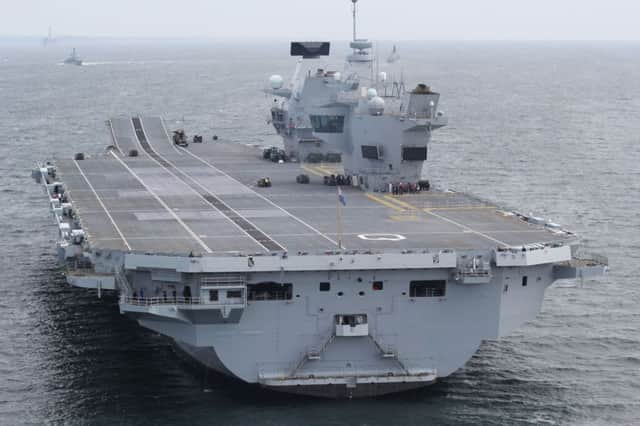£3bn HMS Queen Elizabeth '˜vulnerable to low-cost missiles'


But the £3bn HMS Queen Elizabeth, which was built at yards across the UK before being assembled in Fife, could be sunk by a salvo of low-cost missiles readily available to regimes around the world, an industry report has warned.
A paper by the Royal United Services Institute (RUSI) said that China and Russia were already directing investment into weaponry capable of destroying expensive pieces of equipment, such as aircraft carriers, which are prized by Western armed forces.
Advertisement
Hide AdAdvertisement
Hide Ad“Missiles costing less than half a million pounds a unit could at least disable a British aircraft carrier that costs more than £3 billion,” the report said. “Indeed, a salvo of ten such missiles would cost less than £3.9 million.”
The same report also questioned the effectiveness of the Trident nuclear deterrent, based at the Faslane base on the Clyde, and its planned successor.
“The readiness of NATO to explicitly consider escalation to the nuclear level in the face of losses at the conventional level seems like a hangover from the Cold War and looks less appropriate and credible in the contemporary world,” it said.
HMS Queen Elizabeth will soon begin sea trials after a decade of controversies over cost and logistics.
When then defence secretary Des Browne approved the construction of two new aircraft carriers in 2007, the total budget was £4.85 billion.
Various delays and set-backs mean the Queen Elizabeth and her sister ship, the Prince of Wales, will now cost a total of £14.3bn – including the Lockheed Martin F-35B jets that will fly from them.
The National Audit Office warned in March that technical issues could mean the carrier may not be operational by 2020, as has been promised by the Ministry of Defence. But the MoD said it was committed to ensuring both carriers were fully operational by 2026.
HMS Prince of Wales remains in Roysth. It is due to handed over to the Royal Navy in 2019 and enter active service in 2023.
